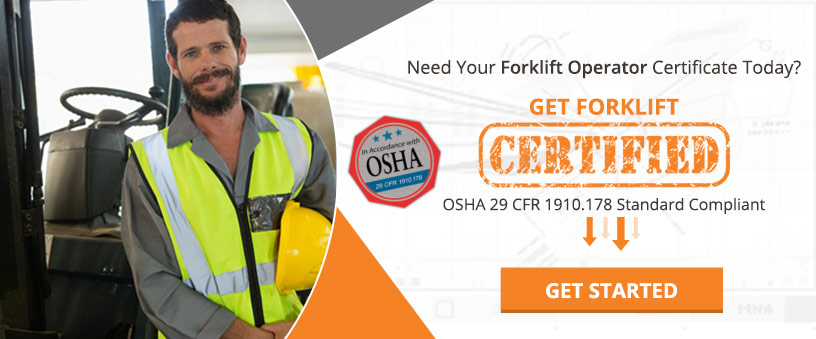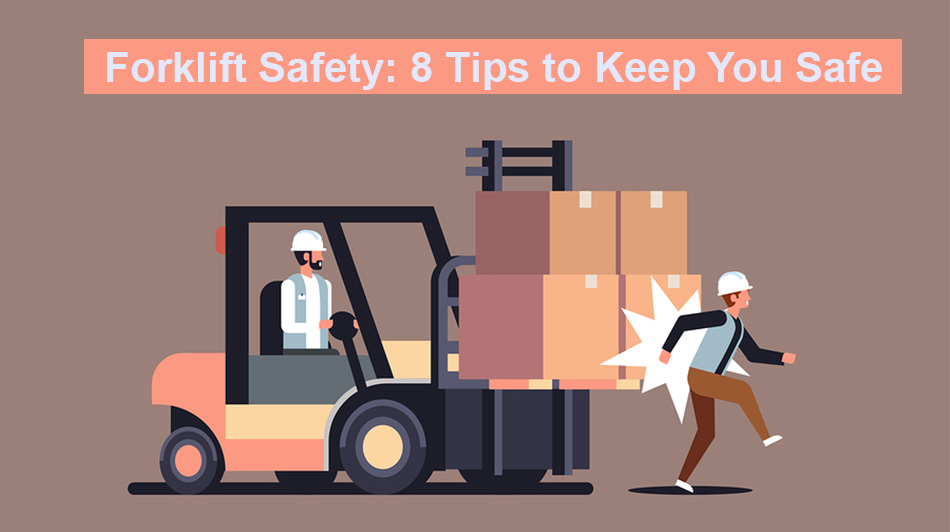OSHA Forklift Training Requirements: Becoming a Competent Operator
Whether you’re just now coming of age and looking for a good career, or you’re changing course mid-stream and want a new option, becoming a forklift operator can be an excellent decision. Forklift drivers are in demand across the nation, particularly in urban areas, but also in suburban and even rural areas where large warehouses are located. However, you’ll find that there are requirements for entering this field. In addition to age restrictions (18 and up), there are also OSHA forklift training requirements that must be met before you can jump into the operator’s seat. What are those requirements, and what do they mean for you? Let’s take a closer look.
Who Requires OSHA-Compliant Training?
Anyone who wants to operate a forklift in any capacity must receive forklift training before they can do so. OSHA requires this for forklifts, telehandlers, and even motorized pallet jacks, all of which are lumped together in the organization’s “powered industrial trucks” designation.
When Is OSHA-Compliant Training Required?
You will be required to take and pass a compliant training course before you can be certified to operate a forklift in the first place. However, there are other instances in which you will need to complete the training. For instance, you may need to go through retraining every three years to recertify your skills and knowledge, depending on your jurisdiction. In addition, any accidents, observed failure to obey safety precautions, or incidents resulting in injuries will require you to take refresher training. This is irrespective of when your last training session was.
What Are the Various OSHA Forklift Training Requirements?
OSHA has a very long, detailed list of training requirements, which can be accessed here. For those who really don’t want to wade through multiple pages of legal speak, we can break things down in plain English below.
First, understand that OSHA requires employers to create, administer, and monitor their own training programs. The organization comes up with requirements and mandates but does not provide any training itself. This is left to employers, which can be quite a burden. The good news is that third-party providers, particularly those able to deliver compliant courses through a digital platform (online), can help alleviate that burden, save employers time and money, and ensure that individuals are fully trained and meet all OSHA training requirements for forklift operators.
Second, understand that the training program is broken down into two primary components,
Component 1: The first component is the theory portion. This includes everything from how to select a forklift as there are various types. It also includes a thorough review of the safety requirements, how to keep the vehicle stable, how to use the fork and other attachments, including detaching and attaching new ones, how to refuel the lift or recharge it in the case of an electric system, and a full understanding of the forklift’s operating limitations
Component 2: The second segment deals with the work environment itself and how the forklift and operator tie into that environment. It is typically called workplace-specific training. Here, you’ll cover things like dealing with pedestrian and vehicle traffic, navigating narrow aisles, driving on different types of surfaces, and the like. You’ll be introduced to concepts like load manipulation, surface conditions, load stability, hazardous locations, sloped surfaces, ventilation, and more.
After completing those two components, you will need to comply with the last of the OSHA forklift training requirements – a monitored live evaluation of your abilities to perform safely while driving a forklift. OSHA requires that the employer conduct the workplace-specific component and final evaluation.
There are several reasons for this. One of the most important is that the employer knows their environment, needs, and fleet of equipment better than any third party ever could. And, because the forklift operator will be working within your specific environment, you (the employer) are the only logical choice for this in-person evaluation.
Course Delivery Options Examined
When it comes to the course you take as an aspiring forklift operator, you have a couple of options. You can attend class in person, or you can take an online forklift certification program. A conventional classroom might seem like a good choice, but it is slowly losing favor. In-person classes are costly for employers, they require a lot of flexibility in scheduling, and they can be costly for students who have to take the time to drive to the location and then sit through classes.
Online learning is growing in popularity. An OSHA-compliant online course can offer the ability to take all the classes needed on your own schedule, whether you want to knock them all out quickly or take a full year to move through the material. For employers, online classes for forklift certification training offer convenience as well, but they also offer cost and time savings, ensuring that there is no downtime for employees or managers and that you only need to worry about evaluating possible hires rather than creating and administering the entire program yourself.
In the End
When all is said and done, OSHA forklift training requirements are in place to ensure operators are well-versed in safety best practices and know how to handle these pieces of equipment. Certification is an essential ingredient for success and safety.





